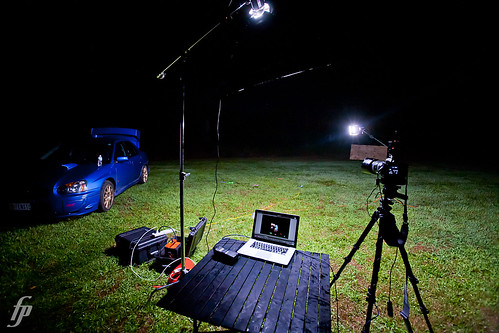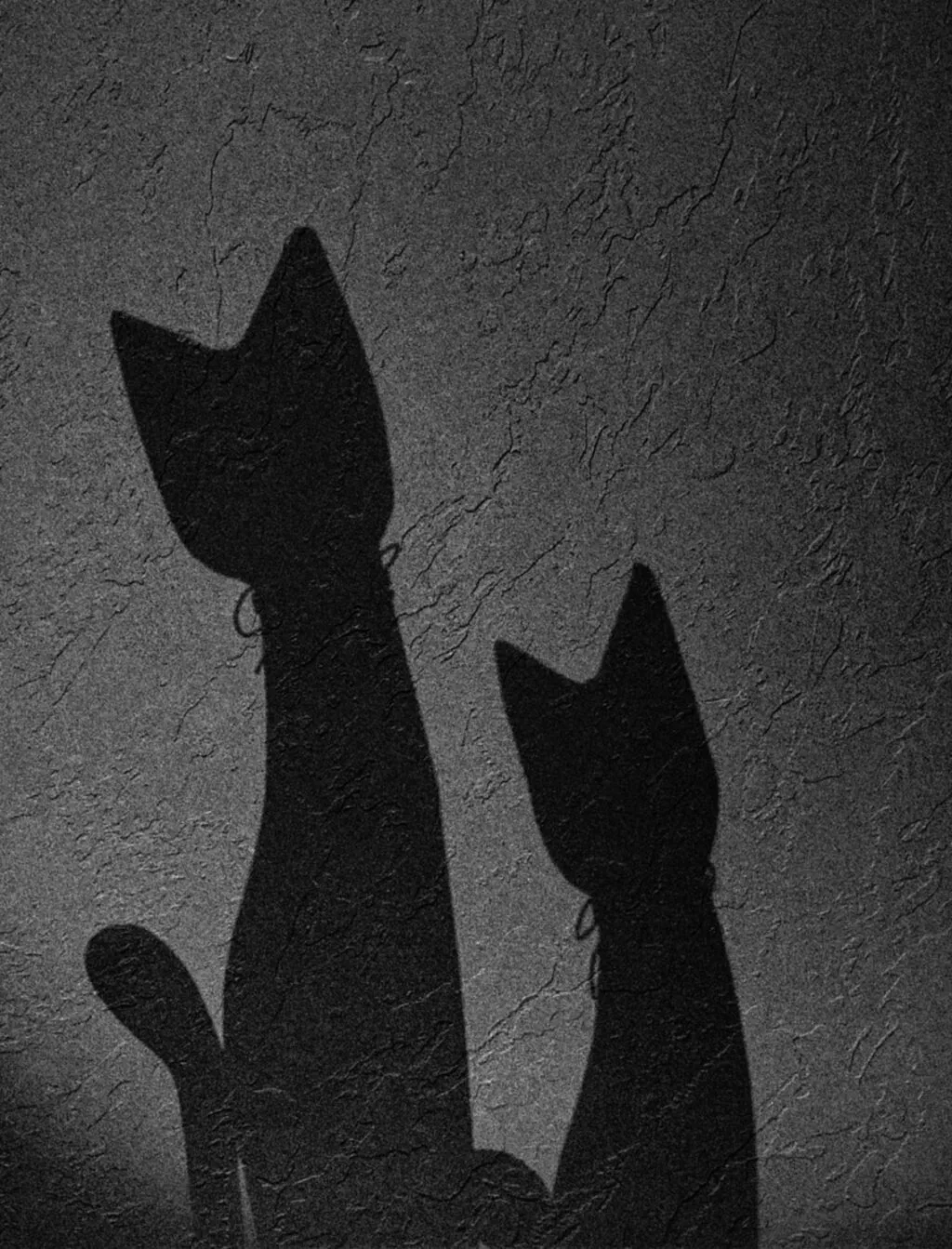Chimping for photographers has become a pretty standard part of shooting. Not familiar with the term? It's when you review the photos you just took, usually followed by an ooh ooh sound by yourself and whoever you're showing. There is a time when the screen on your camera simply isn't big enough to review images properly though.
I've been working with an art director on a regular basis while shooting fashion campaigns and to ensure I'm capturing their vision, reviewing on a laptop screen is required. They want to see how things look captured and for me, I can more easily show them what I'm doing and understand what they want to accomplish.
Shooting a few photos, pulling the card and putting it in the computer with a card reader to preview the images takes too long and leaves the model and stylist standing around, wasting time and money. This is when shooting tethered makes the most sense.
Shooting tethered is when your camera is connected via USB cable to a computer, in my case a laptop. almost every DSLR made is capable of doing this with the included USB cable and software, alternatively Lightroom 3 supports tethered mode for most modern cameras. Follow the directions with the software that came with your camera to import or configure Lightroom 3 to do it for you and the images will be flying off your camera to your computer. That's not it though!
I chose to shoot to CF card + transfer to computer, in case there was a problem in transmission I'd have a backup on my camera, I highly suggest this method.
Also, most cables included with cameras are only 5′ long. This isn't nearly enough working room. To extend your range you'll need a USB extension, and one with a built in repeater. USB technology is only good for about 15′, so a USB extension cord with a repeater will allow you to go beyond that, up to 60′ if you use four 15′ cables. Last shoot I did was my 5′ cable from Canon and one 15′ cable and this gave me plenty of working room.

Photo By Alexander Dummer
Once you have the software setup, you'll need to configure your hardware. I strongly suggest using gaff tape to secure the cable to your camera body, the connection point tends to be a weak point and you don't want to accidentally rip the socket out. Alternatively, if you are not using the tripod socket you can attach a device similar to the photo above to loop the cable through to avoid wear and tear on the socket.
Where the the cable comes out of the camera and the repeater extension connect, I suggest not tying them into a knot or gaff taping them together. If you step on the cable while shooting you want it to easily come undone so you pull your computer off a table or stand.
Because I had a 20′ cable, I could put my laptop at a comfortable distance from where I was shooting so the art director could easily see the model and watch the screen to see what I was shooting. There was no table available so I use a laptop / projector accessory that mounts to the top of a tripod or lightstand.
Depending on your location and if you are going into a desktop or laptop and the availability of tables your installation will be different. I won't suggest you use a stool, folding chair or anything other than a secure location for a laptop though, and will suggest using velcro straps to secure it to the accessory mount, just in case.
With the hardware setup and software configured to shoot, you're free shoot away.
Depending if you are shooting RAW or JPG, and the camera you have, it can take 3 to 15 seconds for images to appear. This means the art director will either be a few shots behind what I'm shooting, or I shoot a few and then wait. Either way, it's faster and far more productive than pulling a card and putting it into a computer. The larger screen allows the art director to better see composition and in my case, I had her flagging images she liked as I shot, greatly speeding up which images were to be edited.
Another option to shooting physically tethered with USB cables is utilizing Eye-Fi technology. They are SD (only) cards that can transmit wirelessly to your computer. There are some severe limitations to using them though. Only some cameras come with a native SD card slot in them and utilizing a CF > SD adapter significantly reduces the range of wireless connection. Additionally, you can't always count on a Wifi network to be available where you are shooting, so you'll need to buy and bring a wireless router which is pre-configured as a private network and ready to go. This in itself adds a layer of technology that I've found both frustrating and not reliable in most situations and greatly prefer to shoot with cables.
When you're shooting the art director needs to understand that what they are seeing are un-edited photos though, and cropping and adjusting can be made in post. They should primarily be using it to judge set design, lighting, product or model placement and overall composition. As it turns out, the hair stylist and make-up artist can now also more quickly and more accurately make adjustments to the model based on how they are being photographed, after reviewing the photos.
Shooting tethered takes some of the mystery out of the shoot since others can see in almost real-time what you're seeing through the lens. I've found it to increase productivity and morale on shoots, with everyone very quickly being able to review and adjust photos while not having to deal with people leaning over your shoulder as you shoot. The rest of the crew can easily pull up some chairs and watch the monitor and help direct.
Other helpful uses for shooting tethered are for macro or product photography where you really need to view detail on each image as you shoot to make minute adjustments on the fly.
It doesn't make sense to shoot tethered for most photography, but when working with a production crew or when you need to see more closely review photos as you shoot them it's a great tool. Tethered shooting has allowed me to shoot better, not edit mediocre photos to be great ones.








10 Comments
Adobe only supports tethering for Canon and Nikon.. but there is hope.
If you have software for your camera that will allow you to run the camera remotely and it can transfer a photography to your computer as you take them.. you can setup Lightroom to monitor the incoming folder. When it see a photography show up it can import the photograph into the library you specified.
I just worked through this last week and I’ve got a more detailed discussion on our club’s website with the “got yas” figured out or head to the Adobe site and dig. It works really cool..
This is a freebie I use and works brilliantly with the Nikon D300 and D700 but I’m waiting for them to upgrade for it to work with the D3.
Bugger. I pressed the wrong button.
I love DIYPhotoBits! I’ve been using for a while now and it works great on my Nikon.
Thanks for the insights!
With Nikon you can use the software Nikon Camera Control, it’s an user friendly software and very reliable.
For those not into DIY there is a great website -www.tethertools.com that can help with managing cables called the JerkStopper as well as portable and studio tables for your computer.
I use an Eye-Fi card in my Canon 550D, which I boughht in order to be able to transfer images wirelessly to my iPad. As I understand it, only a few Eye-Fi cards can handle RAW images, which makes it more expensive, and the setup process was complicated, but it has a Direct Mode, which I think means it sets up its own local Wi-Fi network. I now this sounds pretty woolly, and I have managed to get photographs to appear wirelessly, but because it involves Apple’s Photostream, I can’t be certain of the route the photos took to get to my iPad. It would be an ideal way of shooting thethered if it was more straightforward to set up, especially with the retina displays on new iPads.
Hi,
I’m just learning how to shoot tethered. I have a Nikon D3S and use the “tethered capture” in Lightroom 3.
But I can’t figure out how to shoot so that the image is captured on my CF card as well as my laptop.
You said that you do this, is there a special setting for this? Or does it depend on the software?
Thanks,
Bex
Thank you this was a thorough explanation!